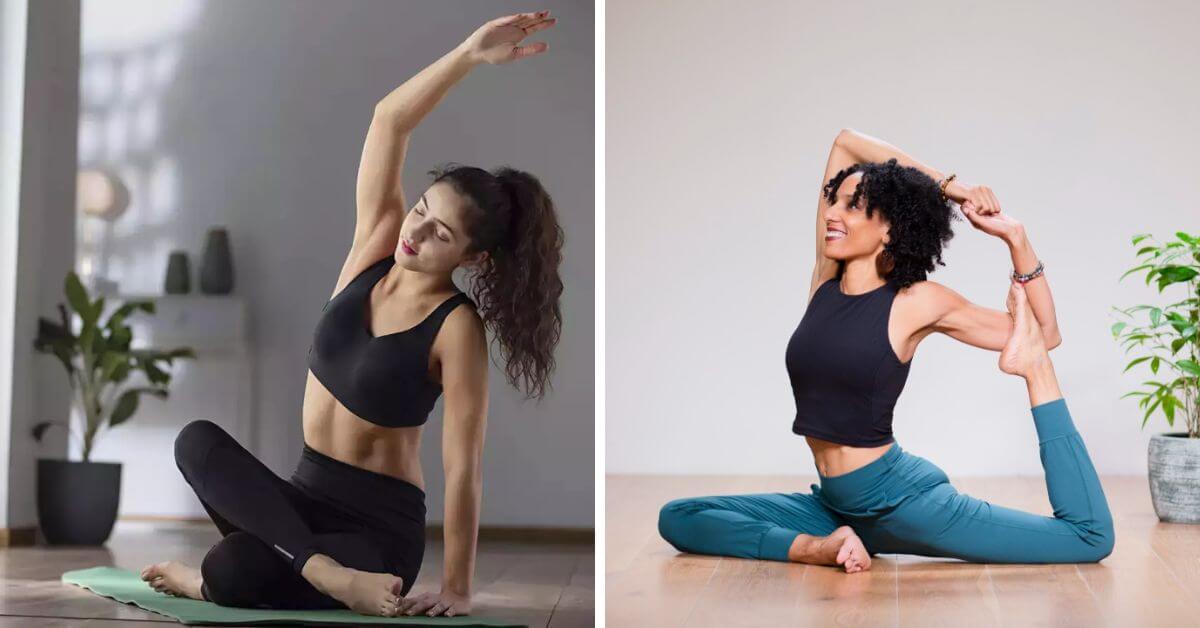Are you looking to stay fit and healthy without the need for expensive gym memberships or fancy equipment?
We explore the benefits of exercising at home, including convenience, cost-effectiveness, and privacy.
Discover the different types of exercises you can do at home, such as cardiovascular, strength training, and flexibility exercises.
Get tips on creating an effective home workout routine, staying motivated, and tracking your progress.
Find out how you can achieve your fitness goals from the comfort of your own home!
In This Article
Why Exercise at Home Without Equipment?
Exercising at home without equipment provides a convenient and cost-effective means of staying fit and healthy. Whether one is pressed for time or values privacy, home workouts can be adapted to align with individual fitness objectives and preferences.
Physical activity at home can promote overall health and well-being by seamlessly integrating exercise into the daily routine without the necessity of commuting to a gym or purchasing expensive equipment.
The flexibility to determine the timing and manner of one’s workouts facilitates customization of the at-home fitness regimen to accommodate specific needs and schedules. This personalized approach not only improves physical well-being but also fosters a positive outlook and heightened energy levels.
What Are the Benefits of Exercising at Home?
Working out at home offers various advantages that can enhance your fitness, health, and overall well-being. By staying active and fit and promoting both physical and mental health, home workouts provide a comprehensive way to enhance your lifestyle.
1. Convenience and Time-Saving
Exercising at home provides convenience and time-saving benefits. It allows individuals to seamlessly incorporate workouts into their daily routines without the necessity of traveling to a gym or adhering to specific class schedules.
This flexibility enables efficient time management, allowing individuals to schedule a workout at their convenience, whether it be early in the morning before the day begins or late at night when the household is quiet. Working out at home eliminates the commute to a gym, the search for parking, and the waiting for machines, maximizing the use of time.
The comfort and familiarity of one’s home environment create a relaxed and personalized setting for a fitness routine. This environment can aid in maintaining motivation and consistency in achieving health goals.
2. Cost-Effective
A key advantage of working out at home is its cost-effectiveness. By cutting out gym membership fees and transportation expenses, you can save money while exercising in the convenience of your own home.
When opting to workout at home, you also reduce other costs like pricey workout gear, commonly needed in fitness facilities. For home workouts, basic equipment such as resistance bands, dumbbells, or even just using your body weight can be sufficient.
This not only saves money but also contributes to creating a tidy and tranquil home setting that promotes health and activity.
3. Privacy
Exercising at home offers a level of privacy and comfort that may not be achievable in public fitness settings. This allows individuals to focus on their workouts without distractions and customize their fitness routine according to their preferences.
The sense of seclusion experienced at home enables individuals to concentrate fully on their exercises, whether it be yoga, weight training, or cardio, without feeling self-conscious. Being in a familiar environment creates a calm atmosphere that promotes prioritizing self-care and well-being.
Furthermore, the ability to exercise in one’s own space allows for scheduling workouts at times that align best with one’s daily routine, resulting in a more consistent fitness regimen. This personalized approach facilitates a deeper connection with one’s body, which can enhance both physical and mental health.
4. Customizable Workouts
One of the advantages of exercising at home is the flexibility to tailor workouts to individual fitness levels, preferences, and objectives. Personalized routines can be created, variations can be incorporated, and modifications can be made to accommodate specific needs.
By customizing workout plans to match personal goals and challenges, individuals can ensure that each session is productive and rewarding. Introducing variations, such as altering the order of exercises or adjusting intensity levels, can help keep workouts interesting and prevent boredom.
Making modifications, such as using different equipment or trying new exercises, not only improves the effectiveness of workouts but also brings excitement and motivation to the fitness journey.
What Are the Different Types of Exercises You Can Do at Home?
At home, individuals can partake in a range of exercises that focus on various aspects of fitness. These options include cardiovascular workouts, strength training, and flexibility exercises, providing a comprehensive home workout routine.
1. Cardiovascular Exercises
Cardiovascular exercises play a crucial role in enhancing endurance and stamina. Performing activities like jumping jacks, high knees, or dancing at home can help elevate heart rate and improve cardiovascular health.
These exercises offer benefits beyond heart health, including calorie burning, increased lung capacity, and reduced risk of chronic diseases. Aerobic activities such as jogging, cycling, or skipping rope can additionally strengthen the cardiovascular system.
Incorporating a range of cardio exercises into a home workout routine can effectively enhance endurance levels, making daily tasks easier and contributing to overall well-being.
2. Strength Training Exercises
Strength training exercises focus on muscle groups to improve strength and muscle tone. Using bodyweight or common household items, individuals can engage in exercises such as push-ups, squats, and planks to target different muscle groups.
These exercises not only aid in enhancing muscle strength but also contribute to increasing overall body stability and balance. By integrating resistance training into a home workout routine, whether through resistance bands or makeshift weights like filled water bottles, individuals can further challenge their muscles and stimulate muscle growth.
For instance, exercises like bicep curls with household items, lunges with added resistance, or tricep dips using a stable chair are effective methods to activate various muscle groups and boost muscular endurance.
3. Flexibility and Mobility Exercises
Flexibility and mobility exercises play a vital role in maintaining joint health and range of motion. Including stretches and core exercises in a home workout routine can enhance flexibility, posture, and overall mobility.
By regularly incorporating stretching into one’s routine, it can help prevent tight muscles and improve blood flow to the joints, thereby enhancing flexibility. Core exercises, like plank variations and Russian twists, not only target the abdominal muscles but also provide support to the spine and enhance balance.
A combination of dynamic stretches such as leg swings and static stretches like the seated hamstring stretch can contribute to improved flexibility and lower the risk of injury during physical activities.
How to Create an Effective Home Workout Routine?
Creating a successful home workout routine includes:
- Establishing achievable goals
- Choosing appropriate exercises
- Integrating warm-up and cool-down sessions
- Maintaining progression and consistency in workouts
A thoughtfully designed routine can assist in reaching fitness goals and sustaining motivation.
1. Set Realistic Goals
Establishing practical health goals is crucial for monitoring progress, staying motivated, and achieving significant results. Whether the goal is weight loss, enhanced endurance, or muscle gain, creating attainable milestones requires a blend of patience and dedication.
By defining specific and achievable health goals, individuals can accurately assess their progress and make any necessary adjustments to their at-home workout regimen. Having well-defined objectives aids in maintaining focus and avoiding potential distractions.
When encountering obstacles, it is important to recognize that results require time, and patience plays a vital role in this journey toward improved health. Embracing a positive outlook and acknowledging small victories along the way can enhance motivation and help individuals remain dedicated to achieving their fitness objectives.
2. Choose the Right Exercises
It is important to choose exercises that target specific muscle groups and to focus on maintaining proper form and technique to maximize the effectiveness of workouts. Progressing gradually in intensity and difficulty is essential for continual improvement and reducing the risk of injury.
When developing a home workout routine, understanding the muscle groups to be targeted and selecting appropriate exercises is crucial. It is important to ensure proper form is maintained during each movement to prevent strain and achieve optimal results.
As familiarity with an exercise grows, consider gradually increasing weight or resistance to continue challenging muscles and promoting growth. Progression plays a key role in reaching long-term fitness goals and maintaining motivation throughout the home workout journey.
3. Include Warm-Up and Cool-Down
Incorporating warm-up and cool-down routines in home workout sessions is important for enhancing flexibility, promoting mobility, and preparing the body for exercise. Including stretches and gradual warm-up sets can help reduce the risk of injuries and optimize performance.
A proper warm-up routine increases blood flow to the muscles, loosens up joints, and enhances range of motion. Dynamic stretches such as leg swings and arm circles are effective for preparing the body for more intense movements. Performing a few sets of bodyweight exercises like squats or lunges can activate key muscle groups and mentally prepare for the main workout.
Cooling down after exercise is equally important as it helps prevent muscle soreness and aids in the recovery process, promoting better flexibility and mobility in the long run.
4. Incorporate Progression and Variation
Maintaining consistency in a home workout routine while incorporating progression and variations is essential for achieving long-term fitness goals. By adjusting intensity levels and introducing new exercises, individuals can challenge their bodies and prevent plateaus.
Consistency not only aids in building a habit but also ensures that the body continues to adapt and improve over time.
To keep things engaging and avoid reaching a plateau, it is crucial to mix up the routine with different exercises targeting various muscle groups.
Incorporating variations like adding resistance bands, changing the speed of reps, or increasing the range of motion can all contribute to keeping workouts effective.
Remember, consistency is important, but so is embracing variety in exercises and adjusting intensity levels to continue progressing toward fitness goals.
What Are Some Tips for Staying Motivated to Exercise at Home?
Maintaining motivation to exercise at home necessitates dedication and methods to sustain enthusiasm and regularity. By securing an accountability partner, establishing a reward system, using fitness apps, and monitoring progress, one can remain motivated and aligned with their fitness objectives.
1. Find an Accountability Partner
Collaborating with an accountability partner can enhance the workout experience by introducing challenges, motivation, and support. Having a reliable partner can boost determination, self-discipline, and overall consistency in maintaining a regular exercise routine.
Exercising with someone who shares fitness goals can bring a new level of enthusiasm to home workouts. Through friendly competition and encouragement, partners challenge each other to push beyond their limits, fostering a sense of achievement and progress.
This shared commitment to fitness not only motivates individuals to stay on track but also provides a source of accountability when the temptation to skip a workout arises. When faced with challenges, having a partner by one’s side can make all the difference in staying focused and dedicated to the fitness journey.
2. Create a Reward System
Establishing a reward system for achieving fitness milestones can promote persistence, self-improvement, and a sense of accomplishment. By setting achievable goals and rewarding oneself for progress, individuals can enhance self-esteem and maintain motivation during home workouts.
This system helps individuals stay focused on their evolution, as each small victory contributes to their larger fitness goals. Celebrating these milestones not only boosts self-confidence but also reinforces the habit of regular exercise. Individuals could reward themselves with non-food treats such as a relaxing bath, a new fitness accessory, or a movie night.
Positive reinforcement creates a cycle of progress, urging individuals to continue striving for self-improvement and ultimately leading to a healthier lifestyle.
3. Use Fitness Apps or Online Workouts
Utilizing fitness apps and online workout resources can offer beneficial guidance, challenges, and immediate outcomes to improve your home exercise regimen. By adhering to structured workout programs and digitally monitoring your advancements, you can maintain motivation and concentration on your fitness path.
These digital resources present a wide range of exercise choices, including yoga, HIIT, strength training, and cardio. With interactive elements like workout reminders and progress tracking, you can tailor your routines to align with your fitness objectives. Online platforms frequently provide varied challenges and community backing, cultivating a sense of responsibility and camaraderie.
The convenience of accessing expert-led classes and tutorials at any time and place adds adaptability to your exercise agenda, ensuring regularity and advancement in your fitness pursuits.
4. Track Your Progress
Monitoring and tracking progress in home workouts are essential for assessing wellness, lifestyle enhancements, and workout progression. By recording achievements, identifying areas for improvement, and celebrating milestones, individuals can stay motivated and committed to their fitness regimen.
This proactive approach to monitoring allows one to see how far they have come and provides valuable insights into their overall wellness journey. A consistent check on progress helps in making informed decisions about lifestyle changes and workout adjustments.
Reflecting on achievements can boost confidence and drive to push forward. Recognizing areas that need improvement is crucial for sustainable growth and enhanced performance. A holistic view of wellness and fitness progression leads to long-term success.






